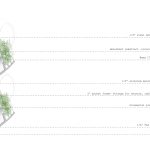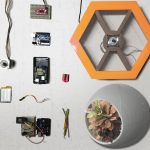Environmental sensing techniques through data monitoring and internet as a tool for architectural design
“The knowledge of the way in which different environmental variables operate in our cities is vital to making design decisions as to the nature of buildings. – Rafael Vargas Correa.“
Designer: Rafael Vargas Correa
Thesis date: 12/01/2014
Thesis Director and Committee: Prof. Humberto Cavallín, Prof. Alejandro Quinteros, Prof. Edgardo Arroyo
TOS[er]: Mónica Román González
TOS Post: March 2016
Esta tesis del alumno Rafael Vargas Correa nos presenta la forma en que las distintas variables medioambientales operan en nuestro ecosistema, siendo vital para tomar las decisiones sobre la naturaleza de los diseños de los edificios. El estado actual de la conciencia de las ciudades en las que vivimos requiere una complejidad en términos de medida y análisis que se excede de las capacidades de los instrumentos tradicionales usados por arquitectos y planificadores para estos análisis. Por esta razón, la investigación se centra en el uso de nuevas tecnologías para técnicas de monitorización ambiental y el uso de esta información con el fin de visualizarlas y diseñarlas.
El rol del sistema Arduino en este desarrollo de la tesis es fundamental. El mismo genera simulaciones de las condiciones ambientales que al recogerse permitirán una mejor producción y un vínculo más fuerte entre la arquitectura y el contexto/conservación medioambiental. Las plantas que forman parte de estos módulos no solo son aislantes para las paredes del edificio sino que también mejoran la calidad del aire eliminando toxinas como el monóxido de carbono que emiten los vehículos.Esto debería dirigir el desarrollo de intervenciones futuras en la ciudad o lugares donde estos edificios estén situados, haciendo uso de la información ambiental actual para la creación de sistemas dinámicos de feedback en edificios.
This thesis written by Rafael Vargas Correa shows us how different environmental variables operate in our environments and are vital to making decisions about the “nature” of the buildings we design. The current state of awareness of the cities we live in, requires a complexity in terms of measurement and analysis that excess the capabilities of the instruments traditionally used by architects and planners for these examinations. For this reason, this research focuses on the use of new technologies for environmental monitoring techniques and the use of this information produced by them as a tool for visualization and design. The role of the Arduino system developed in this thesis is fundamental; generating simulations of environmental conditions.These simulations will allow for the establishment of a better and stronger bond between architecture and the environmental context/conservation. The plants inside the module are not only an insulating element for the building walls but also improve air quality by eliminating toxins such as the carbon monoxide emitted by cars.This should lead to the development of future interventions in the city or sites where these buildings are located that usereal time environmental data for the creation of dynamic feedback building systems.





